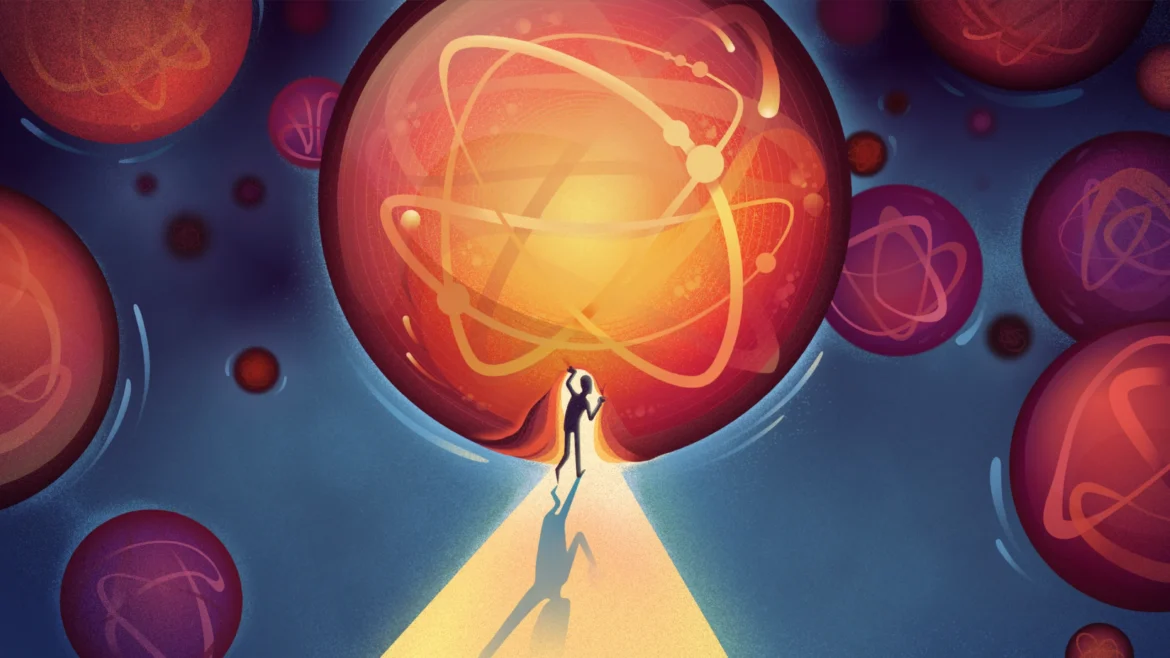Chandigarh, September 20: On a quiet night, when the hum of daily life subsides, many people admit to a strange feeling — that there is more to existence than what is seen, touched, or measured. Dreams that seem to carry messages, coincidences that feel like signs, visions at the edge of sleep — all of these raise the same question: is there another world beyond this one, and if so, how are we connected to it?
Across cultures and centuries, humans have wrestled with this mystery. For some, the metaphysical world is populated by deities, spirits, or ancestors; for others, it is the deep architecture of the mind. “The psyche is not only conditioned by personal experience, but also by the collective experience of humanity,” psychologist Carl Jung once noted, pointing to what he called the “collective unconscious.” Philosophers, meanwhile, have long argued whether consciousness itself is proof that human life is rooted in something more than matter.
Religious traditions provide one kind of answer. From Sufi mystics who speak of hidden realms, to Indigenous shamans who journey to the spirit world, to Hindu and Buddhist teachings on multiple planes of existence, the metaphysical is not an abstraction but a lived reality. Ritual, prayer, chanting, and pilgrimage are described as bridges.
Modern psychology frames the question differently. Here the “other” is not a literal place but the subconscious and symbolic life of the mind. Jung, again, suggested that archetypes — recurring images like the shadow, the hero, the wise old man — are the language of this inner world. “Dreams are the guiding words of the soul,” he wrote.
Much of this connection lies in what is not easily articulated. The subconscious, with its memories and fears, is a hidden continent within us. At thresholds — birth, death, grief, awe — people often feel closest to the metaphysical. “The most beautiful experience we can have is the mysterious,” said physicist Albert Einstein. “It is the fundamental emotion that stands at the cradle of true art and science.”
Dreams, visions, near-death experiences, and synchronicities remain some of the strongest testimonies. Survivors of near-death events often describe tunnels of light and encounters with deceased loved ones. In many cultures, these are taken as glimpses of the other side.
The pathways are strikingly consistent: Altered states of consciousness — meditation, fasting, trance, or even modern psychedelic research show people reporting contact with other realms.
Dreamwork and imagination — intentional attention to dreams has, for centuries, been a way to receive guidance.
Ritual and devotion — structured practices align mind and body, opening channels of perception.
Unbidden moments — sudden visions, intuitions, or coincidences arrive without effort, often in times of crisis.
Neuroscience does not deny these experiences. Instead, it maps their correlates — reduced activity in certain brain networks during mystical states, for example. But science does not settle whether these experiences are “generated by” the brain or “received through” it.
Not all encounters are comforting. Traditions warn of misleading visions, trickster forces, or the danger of losing one’s balance. Ethical traditions emphasize humility, grounding, and discernment. “Test the spirits, whether they are from God,” reads an old Christian admonition. Similar cautions appear in Sufi, Buddhist, and shamanic paths.
Yet for many seekers, the measure is transformation. If an experience leads to greater compassion, clarity, and responsibility, it is considered authentic. If it fuels fear, arrogance, or harm, traditions advise caution.
Ultimately, what remains beyond words is not only the visions themselves but a kind of knowing that is felt rather than declared. It is carried in music, myth, ritual, and art more than in dogma. It is experienced in silence more than in argument.
At its best, the connection to the metaphysical is not an escape from the world but a way of living more fully in it. “We are not human beings having a spiritual experience,” said French philosopher Pierre Teilhard de Chardin. “We are spiritual beings having a human experience.”
Between waking and dreaming, between loss and renewal, humans continually brush against something that feels larger than themselves. Whether one calls it spirit, unconscious, or mystery, it persists as part of human life. The metaphysical may never be measured in laboratories, but it remains woven into the deepest layers of memory, imagination, and consciousness — the place where the unspoken speaks, and the visible world touches the unseen.

